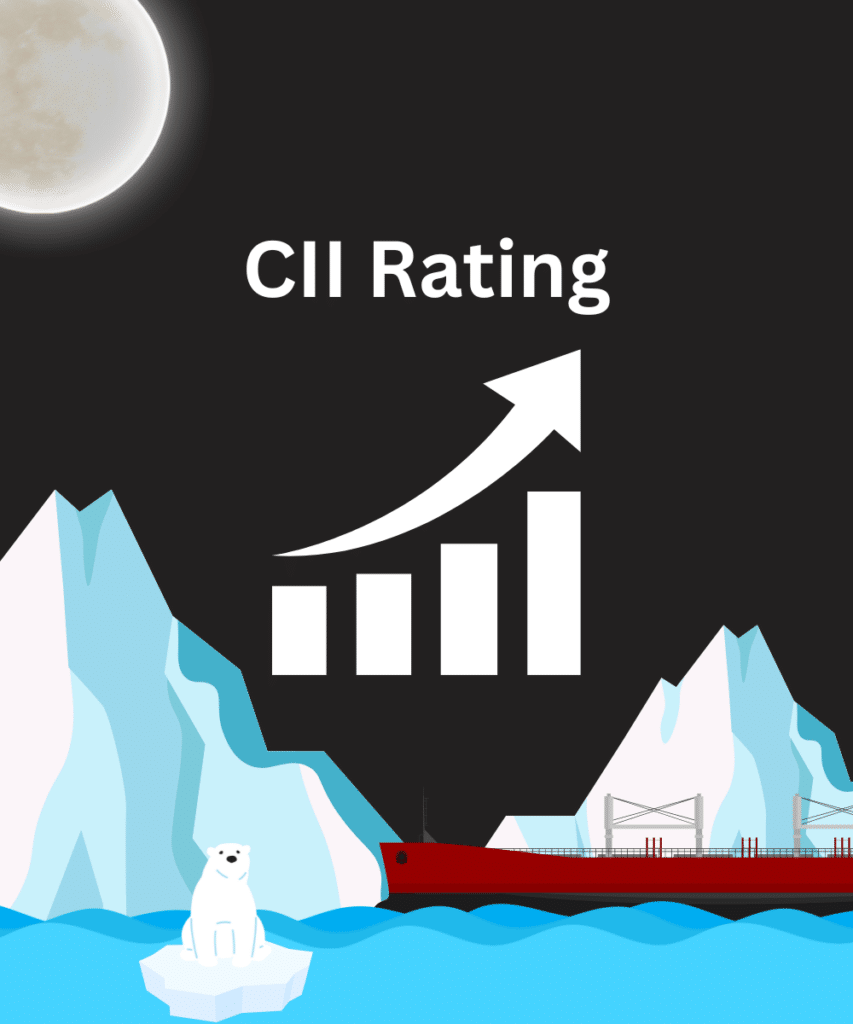Improve Your Vessel’s CII Rating with these 5 actions
The Carbon Intensity Indicator (CII) is a measure of a vessel’s carbon emissions relative to its transport work. It is calculated by dividing the vessel’s CO2 emissions by its transport work, which is measured in tonne-mile.
The IMO (International Maritime Organization) introduced the CII-regulation to stimulate the reduction of carbon intensity of all ships by 40% by 2030 compared to the 2008 baseline. From 1 January 2023 it was made mandatory for all ships to measure their energy efficiency and to initiate the collection of data for the reporting of their annual operational carbon intensity indicator (CII) and CII rating. According to the IMO, shipping generates close to 3 percent of all global greenhouse gas emissions (including CO2) or to put into perspective: More CO2 then the entire country of Germany emits.
There’s little doubt that the CII rating in the near future will serve as both an internal KPI for ships owners and shipping companies, but also as a quality mark for customers choosing the “greenest” company to move their goods. After all, the customer will also be looking for ways to cut emissions in order to ensure their own green profile.
In this blog, we will share five initiatives, you should look into and implement to improve your vessel’s CII rating.
1. Invest in energy-efficient technologies
One of the ways to improve your vessel’s CII rating is to invest in energy-efficient technologies. This can include using low-friction hull coatings, Air Lubrication technology and more efficient engines. These technologies can significantly reduce fuel consumption, which will in turn reduce your vessel’s carbon emissions.
2. Optimize your vessel’s speed and drag
The speed and drag of your vessel can have a significant impact on its carbon emissions. One of the most tangible ways in which shipping companies can improve their CII rating is by ensuring that their vessels are kept clean and free from fouling. Fouling can cause drag and increase fuel consumption, leading to higher carbon emissions. Reports show that a slime layer could trigger up to 25% increase in GHG emissions. A clean and well-kept hull will not only cut emissions but will also save you a lot of money and time. With CleanQuotes Underwater package, you get instant access to underwater cleaning services in more than 400 ports globally and a perfect overview of your fleets cleaning history – making sure that your vessels are performing as well and as sustainable as possible.
3. Use alternative fuels
Another way to improve your vessel’s CII rating is to use alternative fuels. For example, biofuels and LNG can significantly reduce carbon emissions compared to traditional fossil fuels. By 2023, approximately 22% of newly constructed vessels will operate on alternative fuels. Among them, vessels powered by methanol are at the forefront, representing 12% of the total as shown in the graph below.
4. Improve operational efficiency
Operational efficiency is critical to reducing carbon emissions and improving your vessel’s CII rating. This can include measures such as reducing idle time, optimizing cargo loading and unloading, and minimizing energy consumption in onboard systems. By adopting best practices for vessel operations, you can reduce your carbon footprint and improve your environmental performance.
One of the tools that can be used for improving your operational efficiency is CleanQuote. By utilizing CleanQuote, you can promptly access port information, such as average lead time and regulations related to underwater cleaning. This data will enable you to make well-informed decisions and strategically plan for Hull cleaning or similar services.
5. Invest in devices to harness the sun and the wind
Finally, investing in renewable wind and sun energy can help improve your vessel’s CII rating. This can include the installation of solar panels or wind turbines on board, or the use of shore power while in port.
All over the globe, we are seeing experiments to utilize wind energy. French company Airseas has developed a solution called Seawing basically consisting of a giant kite and an automated flight control system. The company is claiming that the use of their solution could reduce emissions and fuel consumption by an average of 20%.
Improving Vessel’s CII Rating: A Global Effort against Climate Change
There are a ton of ways to improve your vessel’s CII rating. By doing so, you can help contribute to a more sustainable shipping industry, reduce costs and improve your image in the eyes of your customers. By working together, the shipping industry can make a significant contribution to the global effort to combat climate change.







